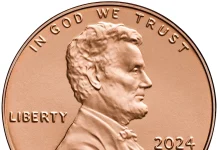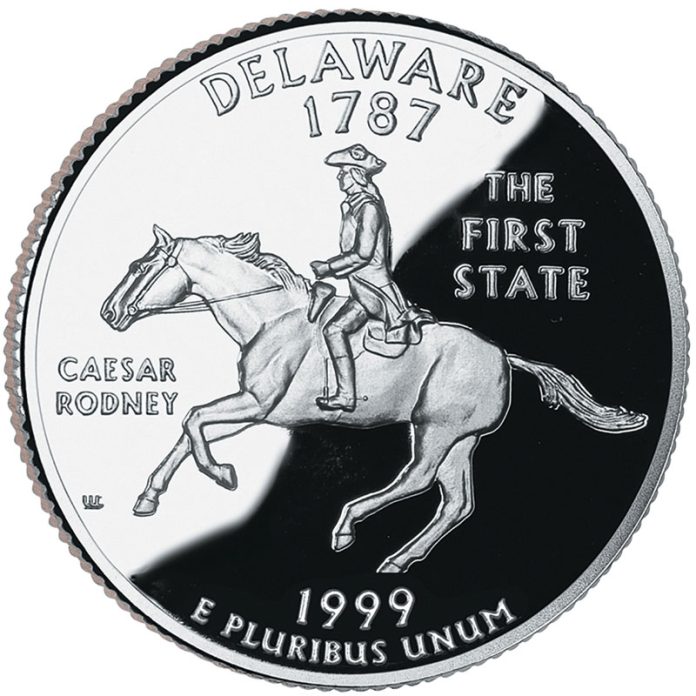
It was 25 years ago, on January 4, 1999, that the 50 State Quarters program kicked off a national fanfare and forever changed the way Americans looked at their coins. An ambitious program fielding 50 quarters to be released over 10 years, the innovative circulating commemoratives saw a new quarter released about every 10 weeks honoring each of the 50 states in the order they entered the Union. The first quarter pays homage to the first state of Delaware, whereas the last, entering circulation in November 2008, captures the spirit of Hawaii.
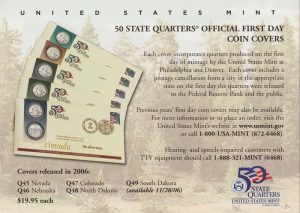
A NUMISMATIC REVOLUTION
The quarters were a sensation, stirring millions to check their change as they built sets. Many had to wait years to see “their” state on a quarter. Some kids who began collecting the coins in the third or fourth grade of elementary school were already in college when the last quarters in the series were released. At one point, the United States Mint estimated that 147 million people – nearly half the population of the United States at the time – were actively collecting the 50 State Quarters.
The quarters were more than a numismatic phenomenon. They were a cultural touchstone bringing the nation forward into the yet-uncharted waters of the 21st century.
The release of each coin regularly made local and often even national news headlines. Kermit the Frog of the Muppets served as the United States Mint’s affable green “spokesfrog” for the 50 State Quarters, appearing in numerous television and magazine advertisements. Even Conan O’Brien of late-night talk show fame regularly parodied the coins with his “New State Quarters” segment.
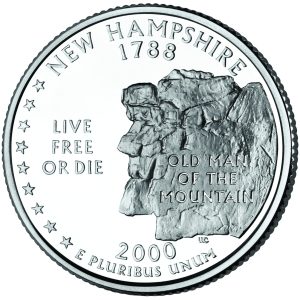
The 2000 New Hampshire quarter showcasing a 40-foot-tall mountainside feature known as “Old Man of the Mountain” became a widely collected memento when the granite formation (and iconic tourist attraction) collapsed on May 3, 2003. The coincidental timing of the 2001 New York quarter being released the same year as the 9/11 attacks in New York City made the Empire State coin a fast seller.
The 2004-D Wisconsin quarters sprouted two varieties that each involved an extra leaf upon a corn stalk – an aberration that at one point made news headlines and fetched hundreds of dollars apiece. The 2005-P Minnesota quarter spawned more than five dozen types of doubled dies that brought big money, too.
STATE QUARTERS BLESSED THE MINT
U.S. Mint sales of proof sets were stellar, with 5-quarter proof sets initially selling for $13.95 and proof sets including the five quarters and other regular-issue proof coins originally issued at $19.95. The fervor for the program sent secondary market prices for the 1999 and 2001 clad proof sets beyond $100 in the years immediately following their release, with silver sets climbing even higher. Today most mint-packaged 50 State Quarters sets sell for less than their initial issue prices.
By the time the 50 State Quarters program ended in 2008, the initiative had been declared a success. It not only brought millions of people into the numismatic fold (many of whom stayed on as collectors to this day), but it also took in billions of dollars for the United States government.
The series also inspired the creation of other long-running commemorative quarter series, including the District of Columbia & U.S. Territories program that immediately followed in 2009, the America the Beautiful Quarters of 2010-2021, and the American Women Quarters that launched in 2022 and is slated to run through 2025.
HOW THE QUARTERS CAME TO BE
Helping to bring the 50 State Quarters from concept to reality was Philip Diehl, who served as the 35th director of the United States Mint from 1994 through 2000 and has since entered the private sector as president of the U.S. Money Reserve.
“The idea for a state quarters program had been floating around the hobby for many years before the Mint gave it any serious consideration,” Diehl recalls. “I dismissed it myself when I heard of it shortly after becoming director. It wasn’t that it was a bad idea; the Mint simply didn’t have the capabilities to do it – on many fronts. But as we successfully attacked our limitations – from coin design, engraving, and die production to order fulfillment and customer service – we began to entertain the idea as a way to reinvigorate the hobby and to create an entrepreneurial culture at the U.S. Mint.”
The former mint director says Delaware Representative Mike Castle was a key ally in making the 50 State Quarters happen. “I recall sitting in his office explaining the idea and telling him that we couldn’t do 50 states in a single year, that the most we could do was five a year. I knew that would be a lot to swallow – a 10-year program. I made the pitch that the quarters would be a good educational device, a way to get kids engaged with the nation’s history.”
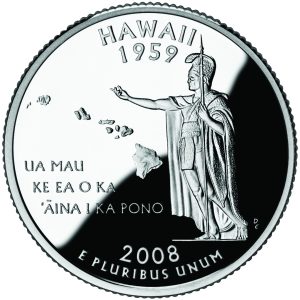
DETERMINING AN ORDER FOR RELEASE
One of the concerns was determining an impartial order for releasing the coins, and two proposals came to Diehl’s mind. “One was to honor the states in alphabetical order. Boring, and not very educational. The second was to issue the quarters in the order in which the states entered the Union. That had some educational value to it.” The second option was something that Diehl knew would resonate with the Delaware congressperson.
“Delaware was the first state to ratify the Constitution, and Mike Castle represented Delaware. He lit up at this suggestion, and I explained that we’d launch the entire 10-year program with a big event on his home turf. He was sold, immediately.”
Congress subsequently wasn’t the hurdle. “Our problem was at the Treasury Department where opposition, at the very highest level, was adamant. It took us a year and a half to negotiate our way through those shoals. Treasury thought I was working with Mike Castle behind their backs, and at one point I thought I was going to be fired due to their suspicions. If they’d found my fingerprints, I would have been toast. It’s silly, isn’t it? That people at the highest levels of the U.S. Treasury would make such a big deal out of quarters…but they did. The details of how the 50 States Quarters program came to be is a case study in how things actually get done in D.C. and why so often they don’t.”
LAYING OUT A ROADMAP TO SUCCESS
The 50 State Quarters were inspired by a similar program the Royal Canadian Mint launched in 1992 — a 12-coin circulating commemorative series honoring each of the country’s provinces and territories. “We took a look at the Canadian quarters program and the U.S. Bicentennial program to get some kind of a fix on what the 10-year demand might be for a 50 State Quarters program,” Diehl recounts. “Both of those were one-year programs, and in almost every other way were not very good models for what we had in mind. But it was all we had.”
Having once served as chief of staff at the U.S. Treasury, Diehl says he knew who he would have to convince there and how skeptical they would be. “So, we developed four or five models to estimate demand for the quarters. We’re talking about incremental demand here – the demand above baseline that would be created by people collecting the quarters out of circulation.”
One of the key factors was arriving at a ballpark figure on how much the program would bring in for the government. “Our estimates ranged between $2.6 billion and $3.5 billion. I knew those numbers would be scoffed at [by the] Treasury – too big to be credible. So, we stuck with the low end of the range, and sure enough, there was scoffing. When all was said and done and the final accounting of the program was completed (long after I was gone), the program surpassed the $2.6 billion lower estimate.”
LIGHTNING IN A BOTTLE
Diehl says the market research he and his team conducted was “on the money” with one exception. “We knew the program would be big with kids, their parents and their grandparents. Lacking a joystick, we didn’t expect the quarters to be popular with teenagers, but it was.” He adds that demand played out pretty much how it was envisioned. “Maybe that was the surprise. It was as big as we thought it would be.”
What was the secret sauce? “A lot of talented people put a lot of thought and work into conceiving, designing, and executing the program, and we had to overcome stiff opposition from naysayers and skeptics,” says Diehl. “But giving the citizens of each state an opportunity to participate in selecting their state’s design created an energy behind the program that sustained it despite the indifference or resistance from Treasury and the Federal Reserve. Just contrast the success of the quarters with the fate of the Sacagawea dollar. Both started with a bang. One bloomed, the other wilted.”
Diehl believes the quarters changed numismatics. “I think it gave the hobby a shot in the arm.” When asked if any other U.S. Mint programs that came along since have captured the same spirit of the 50 State Quarters, he answers, “Yes, I think so.” But there was a key difference with the quarters. “The State Quarters had the advantage of going first. It’s hard to match ‘first.’”
50 STATE QUARTERS WORTH BIG MONEY
Virtually all the 50 State Quarters are worth face value in circulated condition. But there are some exceptions. Here are five valuable state quarters worth looking for:
1999-P Delaware Spitting Horse
A significant die crack that formed on the reverse appears as a raised line emanating from the mouth of Caesar Rodney’s horse, passing through the letters “CA” of “CAESAR,” and terminating at the rim between the 8 o’clock and 9 o’clock positions. The coin once sold for over $100 amid buzz surrounding its discovery, but today it usually retails for between $10 and $20, depending on condition.
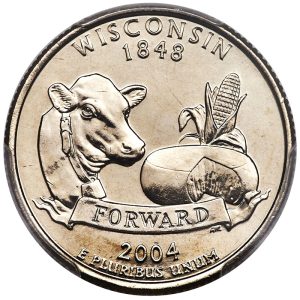
2004-D Wisconsin Extra Leaf Low
Mystique surrounds how not just one but two different 2004-D Wisconsin quarters sport the appearance of an extra “leaf” popping out from the left side of the corn stalk. This variety shows the extra “husk” looping toward the wheel of cheese and is the more common of the two leaf-related varieties. The coin takes around $50 in circulated grades and $215 in Mint State-65.
2004-D Wisconsin Extra Leaf High
The scarcer of the two “extra leaf” Wisconsin varieties, this piece shows the additional husk springing upward, away from the cheese wheel. It fetches some $75 in circulated grades and goes for about $250 in Mint State-65.
2005-P Minnesota Extra Tree Doubled Dies
More than 60 doubled dies of varying magnitudes are known for this coin and generally involve doubling of a spruce three to four trees to the right of the state outline. Minor doubling ups the value of these coins a few bucks, though the more dramatic iterations sell for north of $40 in Mint State-65.
2005-P Kansas “IN GOD WE RUST”
A struckthrough-grease situation caused the unintentional elimination of the “T” in “TRUST” within the nation’s motto. Some may call it sacrilegious; others may laugh. But many collectors find this variety desirable, and values range from $5 to $10 for specimens in run-of-the-mill circulated and uncirculated grades.
This article by Joshua McMorrow-Hernandez previously appeared in COINage magazine. To subscribe click here.



